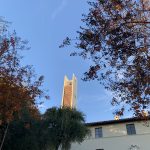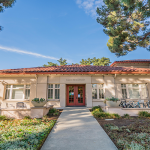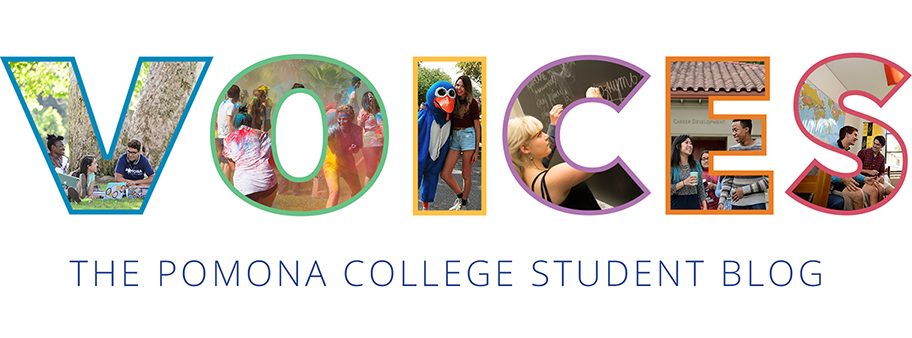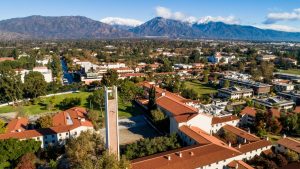By Daniel Garcia ’21
Daniel Garcia answers some of the most common questions about Pomona in relation to the other Claremont Colleges that form a consortium known as “the 5Cs.”
How easy is it take classes at Claremont McKenna, Pitzer, Scripps, or Harvey Mudd College?
It’s more than easy to take classes at the other colleges, and the schools promote it. By having five institutions to choose from, I have access to the best professors at each. Personally, I take most of my classes at Pomona simply because I live on south campus and don’t want to walk for more than five minutes, but I have taken one fiction writing class at Claremont McKenna. It was exceptionally welcoming, warm, educational, and featured representation from all five  undergraduate colleges. I was able to use fiction writing as a conduit to explore my ethnic, cultural, and class identity, creating alternate worlds and changing the typical narratives we see in the media. Due to the class’s diverse nature, I got to read into the worlds of a Cubana exploring her romantic powers, a Taiwanese immigrant working at his mother’s restaurant in New York, a Jewish girl’s bat mitzvah in rural Iowa, and a young gay man coming out in the South, among other amazing stories.
undergraduate colleges. I was able to use fiction writing as a conduit to explore my ethnic, cultural, and class identity, creating alternate worlds and changing the typical narratives we see in the media. Due to the class’s diverse nature, I got to read into the worlds of a Cubana exploring her romantic powers, a Taiwanese immigrant working at his mother’s restaurant in New York, a Jewish girl’s bat mitzvah in rural Iowa, and a young gay man coming out in the South, among other amazing stories.
Do you have any friends from the other colleges?
Of course I have friends at the other campuses! Students from the other colleges are in my classes, in my extracurriculars, and really just about any place on campus. What I really value is how the students of color collaborate across campuses. Aside from the affinity centers like the Office of Black Student Affairs (OBSA), the Queer Resource Center (QRC), and Chicano/Latino Student Affairs (CLSA), the communities themselves informally cross campus boundaries to support each other, to celebrate, and to thrive together. I see these same people at the Queer and Trans People of Color (QTPoC) Coffeehouse that the QRC hosts, at “Café con Profe”, and other events that break the ice between us, leading me to say “hello” and grab a meal more often with these friends.
How do you benefit from being part of a consortium?

As for 5C resources, I really rely heavily on the QRC and Honnold Library (which all the colleges share). For the week before and during exams, I live on the fourth floor of the library. I’m usually found after 8 p.m. in either a booth or a cubicle with my tumbler of coffee, keys clicking away on my laptop writing. I appreciate the snack carts they bring out during finals and of course the café in Honnold Library, which supplies me with the aforementioned coffee in my tumbler. The QRC is where I find some of the best support in the consortium.
Aren’t there other college consortia? How are The Claremont Colleges unique?
 The value of the Claremont consortium lies in its differences. Nowhere else in the country is there a consortium of five colleges, each with their own goals, agendas, strengths, and weaknesses, in such close proximity, all making an effort to educate the leaders of the future. I took that fiction writing class at CMC because of that particular professor who I never would’ve met otherwise, I eat dinner at Harvey Mudd religiously for chicken tikka masala on Saturdays, my friends and I flock to Pitzer for the amazing get-togethers that their Latinx Student Union hosts, and I frequent the Motley at Scripps when I need a lavender vanilla latte on a chilly evening in December. My life as a student, the activities I do, the food I eat, the friends I’ve made, would be entirely different if Pomona wasn’t a part of the consortium.
The value of the Claremont consortium lies in its differences. Nowhere else in the country is there a consortium of five colleges, each with their own goals, agendas, strengths, and weaknesses, in such close proximity, all making an effort to educate the leaders of the future. I took that fiction writing class at CMC because of that particular professor who I never would’ve met otherwise, I eat dinner at Harvey Mudd religiously for chicken tikka masala on Saturdays, my friends and I flock to Pitzer for the amazing get-togethers that their Latinx Student Union hosts, and I frequent the Motley at Scripps when I need a lavender vanilla latte on a chilly evening in December. My life as a student, the activities I do, the food I eat, the friends I’ve made, would be entirely different if Pomona wasn’t a part of the consortium.
Anything else?
I can speak firsthand about how easy it is to connect with Claremont alumni. This past fall, I went through the recruitment process (and got an offer!) with Deloitte Consulting’s Human Capital practice. Through that, I was able to meet a Scripps alumna and two CMC alumni at Deloitte who

guided me through the interviews, answered my questions about life after college, and spoke their truths regarding their experiences in Claremont and at the firm. I have their cell numbers, and know that if I need anything they can help me with, they’d be glad to be there. Also, the entire Deloitte Consulting recruitment process, which is open to all five colleges, is run through the CMC Career Services, and this setup is common across the colleges. Pomona hosted Amazon a few months ago, Pitzer hosted a Goldman Sachs session, and Harvey Mudd is hosting an Intel information session. All of these are open to students at all of the colleges, so it expands your career and alumni connection opportunities infinitely compared to other liberal arts colleges.

